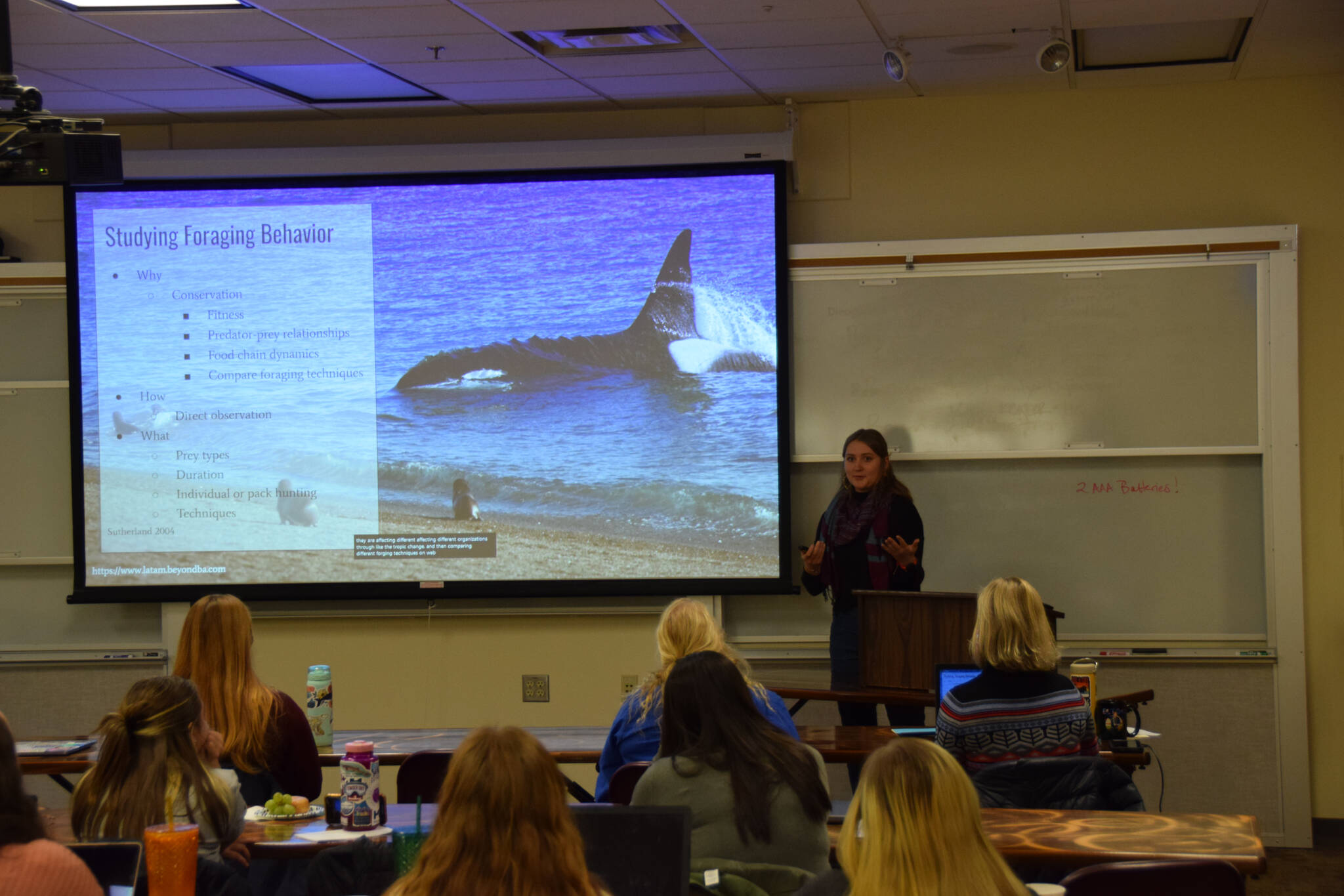A room full of young minds all interested in solving the same problems, and loving the same parts of nature, is sure to produce exciting work.
At this year’s Marine Mammal Biology Symposium, exactly this occurred. Students and community members gathered in the Kachemak Bay Campus of Kenai Peninsula College, University of Alaska Anchorage, last Friday to share research about different types of marine mammals and the conservation efforts necessary to protect them.
Jamie Hoy, a Colorado-born senior joining Alaska from Montana State University, was one of the first presenters of the day. Hoy presented on orca whales.
As she described hunting strategies, social dynamic, and population types the lecture room, and Zoom audience, watched on. Just like the other presenters, Hoy appeared knowledgable and passionate about her studies.
Hoy said she applied for the program “on a whim.”
She has been interested in marine biology for a long time, but with Montana being a land-locked state never had a ripe opportunity to delve deeper with personal encounters. She and her classmates have gone on multiple field trips, such as to the Kenai Fjords for whale watching, which Hoy described as, “so much fun and eye-opening.”
Before coming she had known she liked Alaska for its beauty, but was surprised by the “artsy” community of Homer and the meaningful personal relationships she has been able to develop with the professors of the campus.
Debbie Boege Tobin PhD, one of the lead professors for the Marine Biology program, was present at the symposium. Tobin and others, including Marc Webber M.A. and Lee Post, aka “the Boneman,” have been teaching this fall and for many other fall semesters before this.
The Semester by the Bay fall program has been provided for 12 years now, according to Tobin. She said that this semester the professors and record-high 18 students have had some “fantastic experiences.”
She provided an anecdote of how one day, during a regular two-hour lecture at the Kachemak Bay Campus, she received an alert from a group chat on her phone filled with avid whale watchers that some humpbacks had been spotted by Land’s End Resort. They paused the lecture and all hopped in the vans, racing to the tip of the Spit and getting the chance to observe humpback whales, Stellar sea lions and harbor seals.
The ability to have these opportunities “right out the back-door” is a highlight of the program, said Tobin.
Additionally, she mentioned how the community has been extremely supportive of the program throughout its institution.
There are many local organizations which provide internship opportunities to the students that come to visit Homer, and plenty of local leaders within the marine biology field that stick close in order to provide some guidance and affirmation.
Besides the experiential learning courses where students are able to go on field trips to collect data and observe in real-time, and the more conventional lecture courses, the Semester by the Bay program also holds a Marine Skeleton Articulation course taught by the Boneman.
Overall, the students are given a unique opportunity by studying here.
“Homer is in rarified air,” said Hoy via text. “Where else can you articulate a beluga skeleton one day and observe sea otter behaviors in the bay the next?”

